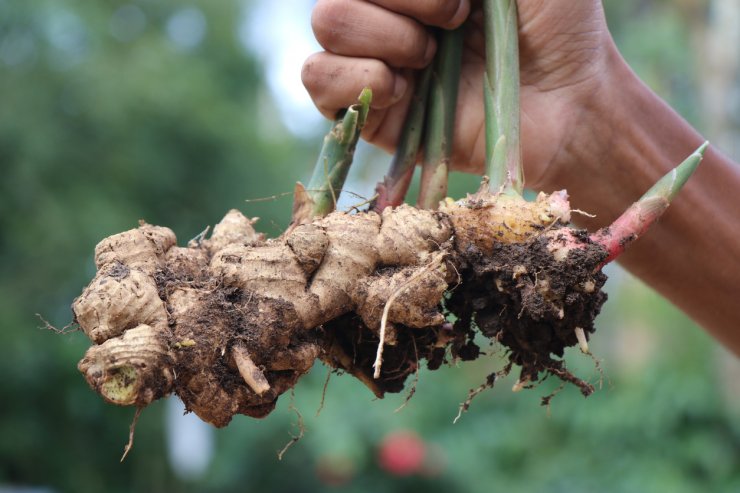
Edible rhizome of culinary ginger.
For descriptive growing purposes, ginger is loosely grouped into three classifications—culinary, ornamental, and wild.
Culinary ginger plants produce rhizomes that are good for eating, preserving, cooking, and using in traditional home remedies. The main ginger in that category is common ginger, or Zingiber officinale. Another member of the ginger family is turmeric. We don’t tend to refer to it as a type of ginger, but it grows and develops in much the same fashion. Beyond Southeast Asia, where turmeric is native and has about 80 varieties, there tends to be just one variety—Curcuma longa. We won’t go into great detail in this collection about turmeric; just know that you can apply most of the same planting, growing, and harvesting principles to turmeric as you do to ginger.
Ornamental ginger plants differ from their culinary cousins in two main ways: 1. they frequently produce colorful flowers; and 2. they are often toxic.
Wild ginger plants often carry the name ginger. They may smell like ginger. But they are, in truth, from a different plant family and they are sometimes toxic and/or carcinogenic. First Nations peoples often knew how to use these wild plants to treat a wide array of ailments. But unless you are a skilled ethnobotanist, you should leave these wild plants in the wild.
Which type of ginger plants do you grow—culinary or ornamental? Please tell us why you’ve chosen that type of ginger to grow.


 Previous
Previous


Only ginger for culinary purposes.